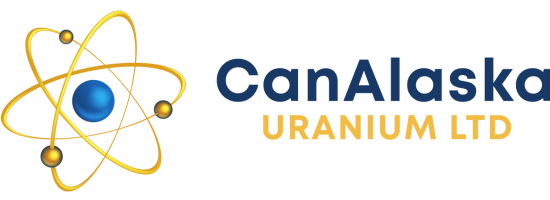Vancouver, Canada, February 27th, 2008 — CanAlaska Uranium Ltd. (CVV — TSX.V) (the “Company”) is pleased to report the commencement of winter drilling at two further sites in Canada’s Athabasca Basin.
Cree East Drilling
Drilling has commenced on a cluster of targets, and the current drill program of five holes and 2,300 metres will all test this initial area. Drilling is expected to continue into April, and may be extended depending on site conditions. CanAlaska Uranium is carrying out the project work on behalf of CanAlaska Korea Uranium Ltd., which is funding a $19 million program of exploration on the property.
The Cree East Project is situated in the Southeastern Athabasca Basin, approximately 25 km west of the Key Lake uranium mine, and 20 km south-west of Cameco Corp.’s Millenium uranium deposit. The Project claims were staked by CanAlaska in 2004, and cover 559 sq. km. of the Wollaston-Mudjatik domain rocks. Historical drilling tested alteration zones and targets, generally to the south and east of the property, and current exploration by other companies is revisiting these areas. The depth to the unconformity varies from 250 metres in the south to an inferred 800 metres in the north. From geophysical evidence and past drilling, there appears to be a number of step structures at the unconformity boundary and in the basement.

CanAlaska carried out airborne surveys across the property area in 2005 and determined priority targets. In 2006, detailed collection of over 2,000 surface rock samples and over 400 lake sediment samples by CanAlaska’s field crews defined three large areas of dravite and clay alteration on surface, and localised boulder samples containing anomalous uranium. It is thought that the dravite and clay alteration, coupled with the anomalous uranium in the lakes and boulders in this vicinity indicates the proximity of unconformity and basement style uranium mineralization. The shallow depth to basement also allowed close definition of conductive zones and geological structures from the airborne survey data. During winter and summer of 2007, the Company conducted further IP-Resistivity and Audio Magneto Telluric geophysical surveys. Initial ground geophysical data have provided the Company with evidence of strong alteration in the sandstone horizons overlying these basement conductors.
Lake Athabasca Drilling
Drilling is underway at Johnston Island on the Lake Athabasca Project, located just south of the past-producing Gunnar Uranium Mine, in the Uranium City area. This program is a continuation of the drill exploration carried out in March-April, 2007, during which the company drilled significant alteration and uranium mineralization at nearby Stewart and Grouse Island. (see News Release of Aug. 21, 2007). The field crews expect to complete 2,000 metres of drilling on shallow offshore targets, and on land-based targets identified from extensive geophysical and geological work carried out over the past two years.
The Company carried out intensive exploration over the summer months in both target areas, and on the Northern Islands nearer to the historic Gunnar Mine. This field work included detailed offshore seismic profiling and lake bottom sediment sampling adjacent to zones of on-shore uranium mineralization. A number of these on-shore uranium showings were identified in the early 1960’s, but have had little exploration because of historic limitations.
The Gunnar mine is the major historic open pit uranium producer in the Uranium City area, and the only intrusive-hosted uranium mine in the Athabasca. It lies just to the north of CanAlaska’s project claim boundary. The mine’s airborne and structural characteristics are closely matched to similar features found on targets located within the islands immediately south, and within CanAlaska’s 100% project holdings.
 Click on map to view in high resolution image
Click on map to view in high resolution image
In the 2007 drill program at Stewart Island, drilling intercepted hematitic sandstone units with local epithermal style vuggy brecciation and alteration. The unconformity was intercepted at an average of 49 metres below surface. Elevated uranium mineralization was noted in core using hand-held scintillometer, and local zones of moderate uranium enrichment were noted, with assay values exceeding 1% U3O8. At Grouse Island, 3.5 kilometres south east of the initial 5 holes at Stewart Island, drillholes LAA006 and 007 intercepted major fracturation and brecciation of the sandstone from surface to the unconformity, which is at 156 metres depth. There is significant quartz-dravite flooding in the holes, with strong alteration over 20 metres into the basement rocks, associated with strong fracturation, chloritization, and shearing, with replacement dravite and quartz mineralization.
The person responsible for this press release is Peter Dasler, P.Geo..
About CanAlaska Uranium
CANALASKA URANIUM LTD. (CVV — TSX.V, CVVUF — OTCBB, DH7 — Frankfurt) is undertaking uranium exploration in seventeen 100%-owned and two optioned uranium projects in Canada’s Athabasca Basin. Since September 2004, the Company has aggressively acquired one of the largest land positions in the region, comprising over 2,500,000 acres (10,117 sq. km or 3,906 sq. miles). CanAlaska has expended over Cdn$24 million exploring its properties in the Athabasca Basin and has delineated multiple uranium targets. Initial drilling results from the West McArthur Project revealed uranium mineralization and significant zones of hydrothermal alteration, indicative of a favourable environment for uranium deposition. Active drilling and exploration has continued through the Summer, and Fall 2007 seasons at West McArthur and at 2 other significant projects. The Company’s high profile in the prominent Athabasca Basin has attracted the attention of major international strategic partners. Among others, Mitsubishi Development Pty., a subsidiary of Japanese conglomerate Mitsubishi Corporation, has undertaken to provide CanAlaska C$11 mil. in exploration funding to earn 50% of the West McArthur Project. In addition, exploration of CanAlaska’s Cree East Project has commenced under a C$19 mil. agreement executed with a consortium led by Hanwha Corporation, and comprising Korea Electric Power Corp., Korea Resources Corp. and SK Energy Co, Ltd.
On behalf of the Board of Directors
“Peter Dasler”
Peter Dasler, P. Geo., President & CEO
Investor Contact: Emil Fung, Vice President, Corporate Development
Tel: +1.604.688.3211 Toll Free (North America) 1-800-667-1870 Email: info@canalaska.com
The TSX Venture has not reviewed and does not accept responsibility for the adequacy or accuracy of this release: CUSIP#13708P 10 2.
This news release contains certain “Forward-Looking Statements” within the meaning of Section 21E of the United States Securities Exchange Act of 1934, as amended. All statements, other than statements of historical fact, included herein are forward-looking statements that involve various risks and uncertainties. There can be no assurance that such statements will prove to be accurate, and actual results and future events could differ materially from those anticipated in such statements. Important factors that could cause actual results to differ materially from the Company’s expectations are disclosed in the Company’s documents filed from time to time with the British Columbia Securities Commission and the United States Securities & Exchange Commission. Not to be construed as an offer to buy or sell securities of CanAlaska Uranium Ltd.

